blog.x-e.ro / interactive: page 1 of 11
mobile :: my first itunes release

the Bioregenerative Life Support System Simulator, BLiSS Sim, is an ipad app, built with titanium studio, based on investigations conducted by NASA scientists and engineers to explore how plants can be grown to provide air, water, and food for astronauts at a lunar base.
BLiSS uses a game format to engage youth and adults in the challenges of supporting humans in space or extreme environments on earth.
The app is free and available for download from the iTunes Store.
Visit the promotional website at: http://bliss-sim.cet.edu/
demos :: papervision3D math art
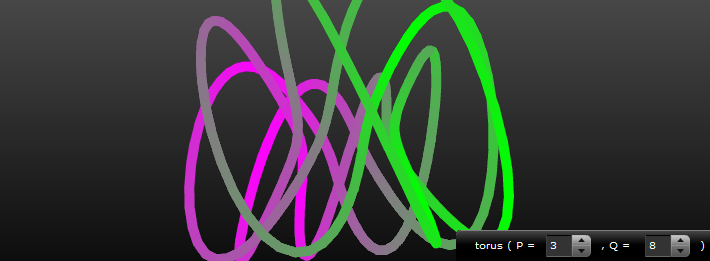
here we go again, another papervision3D demo featuring math permeated lines. this time im working with a classic piece of code known as the PQ torus. the vague idea is that you have 2 numbers (P + Q) that are used in the algorithm to define the knot. in general, given P + Q mutually prime, the line wraps meridionally around the torus P times and wraps the longitudinally around it Q times. i was having some trouble grasping exactly how this was going to be achieved, until i read this article on blackpawn’s website. he really breaks down the algo to a very simplistic level...
demos :: drawing the logo
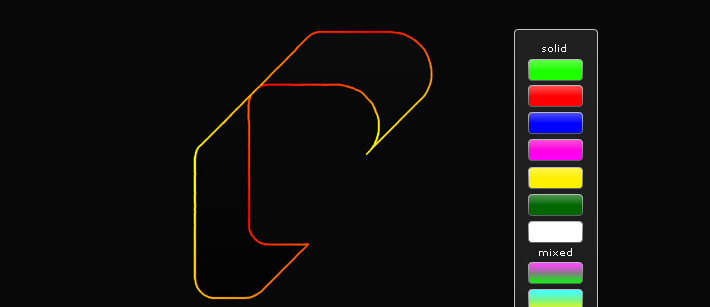
a question popped up on the papervision3D mailing list the other day about using the lines3D class to trace a 3D object. i found the idea fascinating, so i whipped up this little demo to demonstrate how simple it actually was. i started out by creating a simple cylinder with a wide base and small top, and setting its visibility to false. then creating my lines3D object. finally in the render loop i create a new line3D that connects each vertice. by checking to see in a counter variable is less than the total object vertice count ((box.geometry.vertices.length)), and adding a new line3D if the counter is less than that, or deleting all the lines and starting over...
demos :: with papervision3D
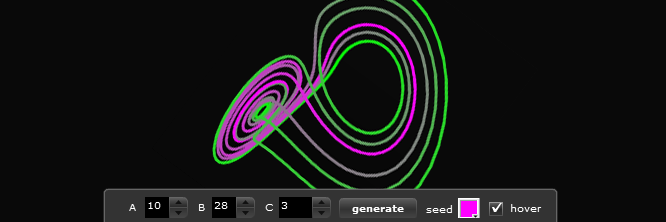
we were discussing recursive algorithms and chaos theory at work yesterday. when one of the chemistry professors brought up the lorenz attractor. he was trying to draw one on the white board for about 10 minutes until i decided it would be easier to draw in flash, lol!
after a quick conversation w/ andy zupko about the new Line3D object, and my new CanvasView3D component for papervision, i made a sweet lorenz attractor!
the algorithm is super simple:
x1 = x0 + h * a * (y0 - x0);
y1 = y0 + h * (x0 * (b - z0) - y0);
z1 = z0 + h * (x0 * y0 - c * z0);
demos :: interactive 3D objects
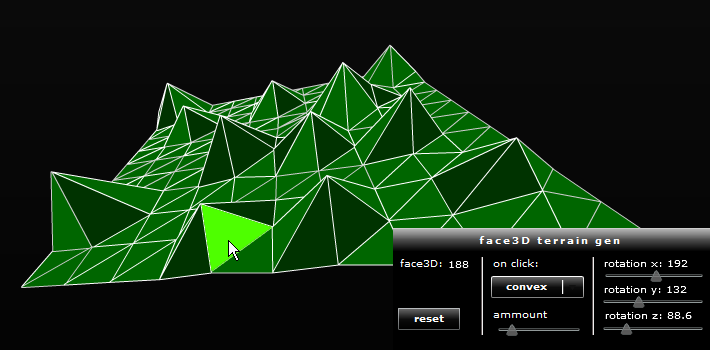
the new pv3d 2.0 release features an entirely new way of dispatching and handling events. earlier versions of the engine utilized two different flavors of materials, regular and interactive. with this new release, you just have materials with a boolean interactive property.
with this simple demo, im trying to learn more about the new interactive scene events. first, you create a 3D scene, and set it's interactive flag to true:
view = new Viewport3D(width, height, scaleToStage, interactive);
then create a material and set it's interactive property to true:
demos :: let there be dynamic shaders!
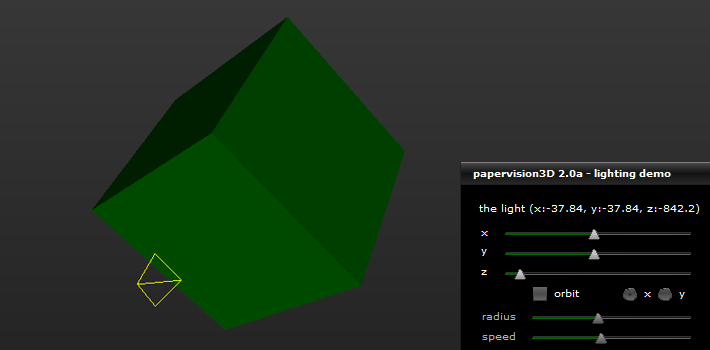
working with the new pv3d 2.0 release, there are a lot of new features to learn. one of the most powerful being the new pointlight3D class. using this will allow you to create all kinds of cool shading effects. at first i was having some trouble deciding where the light is positioned by default. i tried setting the light’s visibility flag to true, but it still wasn’t rendering. after a bit of digging i discovered that the position of the light by default it set to (x:0, y:0, z:-1000), no wonder it wasn’t rendering, it was in the same position as the camera!
so i decided to make a little flex demo for the new pointlight3D class. the flex form allows you to use sliders to move the x, y, and z position of the light, as well a an orbit function.
demos :: code name - great white
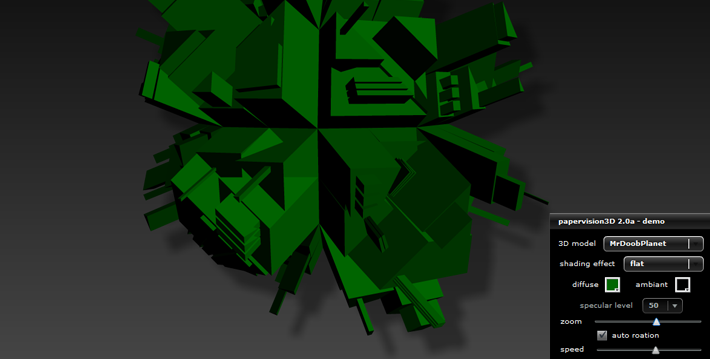
well the time is finally upon us, for all of you who aren't avid mailing list readers, papervsion3D 2.0 alpha (code name: great white) has been released for testing. and the team bringing real-time 3D in flash has gone all out this release! this versions new features boast shaded materials, custom shaders, the new ascollada (now with animation support), frustrum culling, multiple viewports, rendering to scene, and more...







